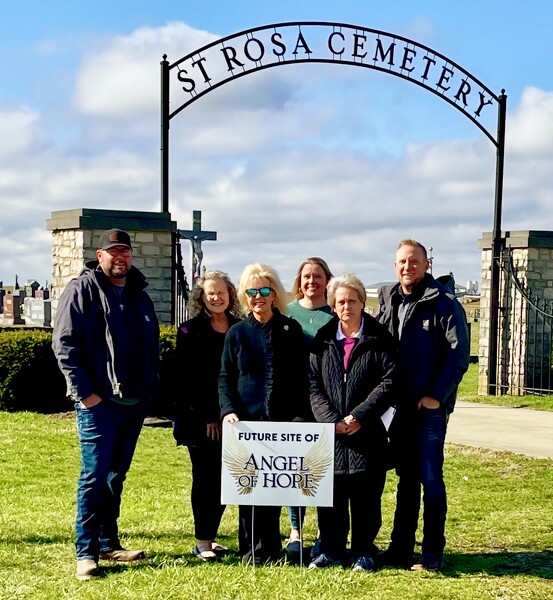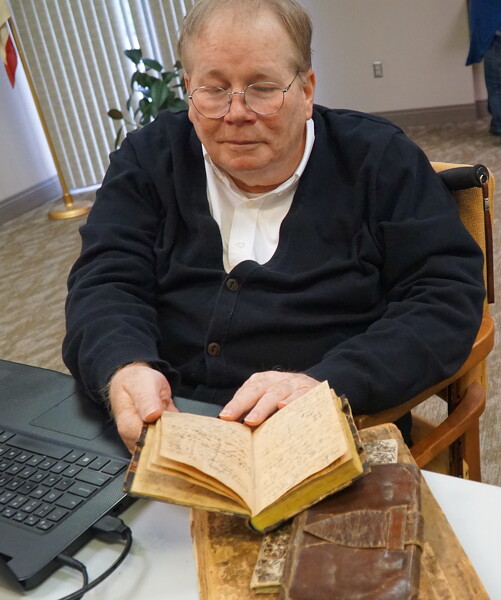
The Rev. David Hoying, a retired priest, is an area historian and archivist at St. Charles Living Center.
CELINA - Some of west central Ohio's earliest settlers arrived in the new country in September 1834 in the Bark Everhard ship, which The Rev. David Hoying refers to as "The Mayflower of the Ohio Münsterland" - an area today containing Minster, Fort Loramie, Maria Stein and St. Henry.
While offering a wide-ranging presentation Sunday centered on his two German ancestors - Carl Heinrich Hoyng and Carl Heinrich Diekmann, originally of the Oldenburger Münsterland region - Hoying, a retired priest, area historian and archivist at St. Charles Living Center, brought to life the long journey across the Atlantic Ocean to Ohio and beyond.
Hoying was the guest speaker at the Mercer County Chapter of the Ohio Genealogical Society's monthly meeting at the Richardson-Bretz Building in Celina.
Over a period of two years, emigrants from Oldenburg, including Carl Heinrich Hoyng and his wife, Maria Margaretha Lucia Langeland, came to the United States by way of the Everhard.
Oldenburg immigrants established settlements first in Cincinnati and Covington, Kentucky, then in Minster in 1832; Oldenburg, Indiana in 1836; Teutopolis, Illinois, in 1838; and New Vienna, Iowa, in 1842. That was followed by Meire's Grove, Minnesota, and Seneca, Kansas.
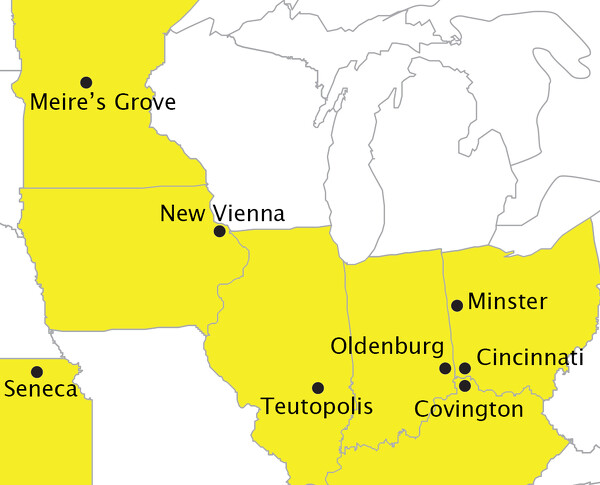
Oldenburg immigrants established settlements first in Cincinnati and Covington, Kentucky, then in Minster in 1832; Oldenburg, Indiana in 1836; Teutopolis, Illinois, in 1838; and New Vienna, Iowa, in 1842. That was followed by Meire's Grove, Minnesota, and Seneca, Kansas.
"A group of Oldenburg emigrants, basically single men, came over in July of 1833," Hoying said. "They basically came to west central Ohio to the Mercer County area and they bought land." The Hoyngs landed in Baltimore in September 1834 and later made their way to Egypt, Ohio.
"The ship of the Everhard, the statistics are 151 passengers - 77 men, 49 women (and) the rest were children," he said.
Breaking the figures down further, 114 of the 151 passengers were from Oldenburg; 68 would settle in the Ohio Münsterland. They included members of the Wellmann, Heckmann, Gelhaus, Grieshop, Osterloh and other families.
"So I sort of look to the Everhard as the Oldenburg Mayflower since it was one of the ships that brought over … a large number of people who came to the area," Hoying said. "There's a couple others that have almost just as many."
As it happens, another of Hoying's ancestors, Carl Heinrich Diekmann, came to the area on the Phoenix by himself in 1883. He settled in Minster, established a store and married Maria Angela Drees, whose brother, Johann Michael Drees II, was the first mayor of Minster.
Maria Diekmann's other brother, the Rev. Heinrich Joseph Drees, was the provincial of the Missioners of the Precious Blood for 18 years, and her sister Maria Gertrud Drees Waschefort was one of the founders of Teutopolis, Illinois.
"Her mother was a Moormann, and she was a sister to Franz Heinrich Moormann at St. Henry, whom all the Moormanns come from," Hoying said.
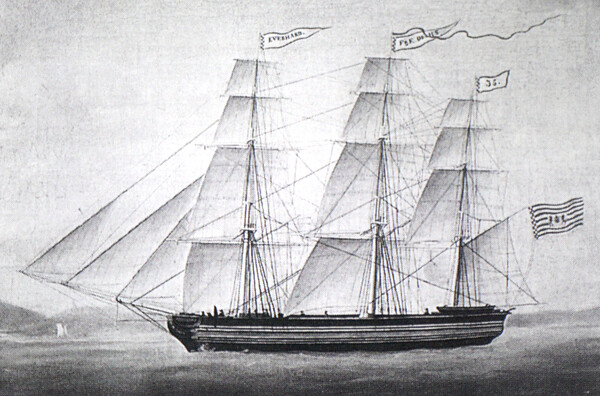
A painting of the Bark Everhard, which Hoying calls "the Mayflower of the Ohio Münsterland."
The Bark Everhard was a barge converted into a passenger vessel to bring the emigrants to the United States of America. It was one of the better ships to sail out of Bremen, but still not that much different from ships involved in the slave trade, Hoying said.
"The most dangerous part of immigration was the trip on the boat," he noted. "They took a regular ship that was used for cargo. Well, they took the hold (or bottom) and they put a floor in it. Now below that floor was the bilge water, and so if you got too low, then that water was thrown up between the cracks, and of course the water didn't smell too good."
The ship's supply of food and potable water was limited.
"Each person got a certain amount of water a day that they had to use for washing and cleaning and cooking. And so the water got brackish," Hoying said. "They had bread that was often stale, and so they would make soup and other things. The people couldn't cook in the hold, so they had to rely upon the ship's cook for their meals."
Storms could last for several days on the high seas, and because not many lanterns were permitted on the ship due to the high risk of fires, the passengers were essentially locked up in the hold amid darkness and sordid conditions for several days.
"When a storm came in, generally the hatch was open, and so when the waves start going, the water went into the hold and got everybody's bedding and clothing wet," Hoying pointed out.
Ships leaving Bremen like the Bark Everhard could be thrown off course by high winds.
"If it was blowing from the south, they couldn't go to the English Channel. They ended up having to go around Scotland and Ireland, and so you get into the North Sea and that's much stormier and it's colder." he said. "Finally, they could make it around that, go down, and once they get past Ireland, then they had some smoother sailing, and then they would get down to the Azores and then head on over."
Ships carrying emigrants from Oldenburg would arrive at either Baltimore, New York or New Orleans, Hoying said.
"New Orleans was not necessarily one that they chose because if they got into a storm and they got off course, they would have to go south and go up through the Caribbean to New Orleans," he explained.
The trips would take between three to five months.
The Oldenburg people who arrived in Baltimore would normally travel by train to Fredericksburg or Philadelphia. From there, single journeyers caught a ride on stagecoaches and families crammed into Conestoga wagons.
"It took about 17-18 days to go across Pennsylvania, and then they got to either Pittsburgh or Wheeling, and from there they took generally a steamship on the Ohio River to Cincinnati," Hoying said. "From Cincinnati they took the canal up to Dayton and then later to Piqua, and from Dayton they took an ox cart to Minster."
The passage from New York and New Orleans was a little bit different.
"Sometimes they would go from New York to the Erie Canal to one of the ports of Lake Erie, and then go over to Cleveland and then take one of the other canals down," Hoying said. "New Orleans, you would go up through the Mississippi River and Ohio River, up to Cincinnati."
In addition to Minster in Jackson Township, the Oldenburg immigrants settled Fort Loramie in McLean Township, Maria Stein in Marion Township and St. Henry in Granville Township.
"They have the same culture and everything and it still holds true in a way," he said.
On Christmas Day in 1833, the Rev. Friedrich Rese celebrated the first Mass in the settlement now known as Minster, officially ushering in Catholicism in west central Ohio.
The St. Augustine parish, served by the Missionaries of the Precious Blood, is considered the mother church that other area parishes trace back to.
The Land of the Cross Tipped Churches highlighting the roots of Catholicism in the area was added to the National Register of Historic Places in 1979. The tourist attraction includes dozens of churches, former convents, schools and rectories, as well as cemeteries and other sites across Mercer, Auglaize, Darke and Shelby counties. Visit landofthecrosstippedchurches.com to learn more about these sites and the people who established the communities around them.
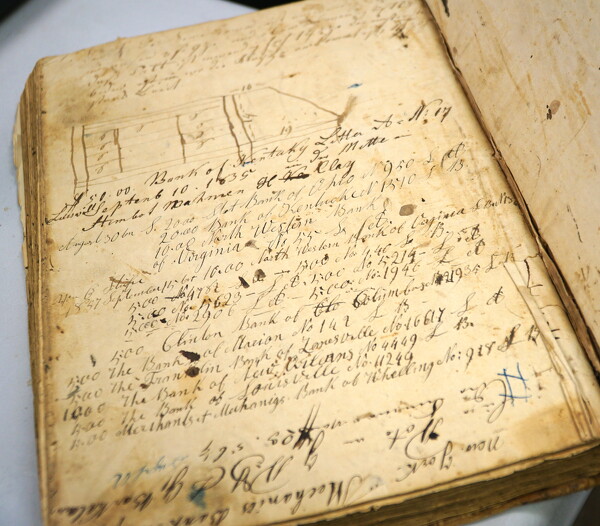
A page from an accounting book of Carl Heinrich Diekmann, who started a general store in Minster just after arriving from Oldenburg in Germany.
